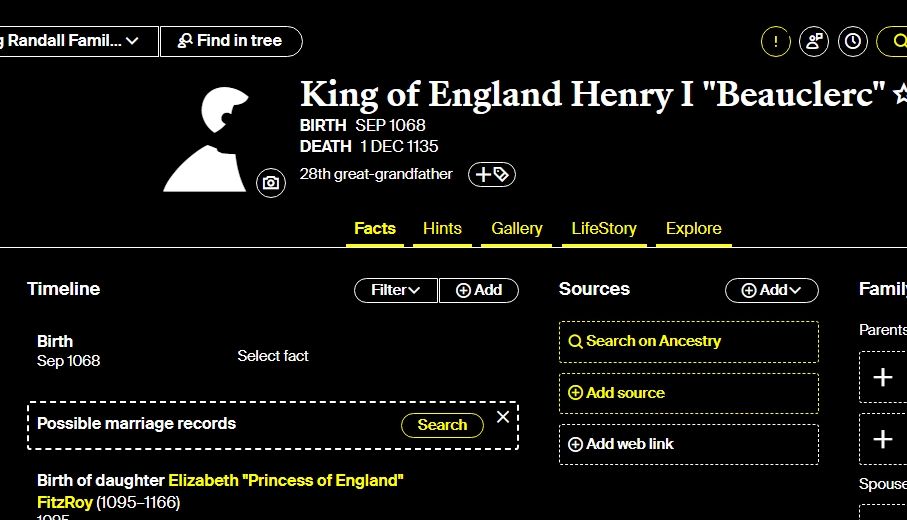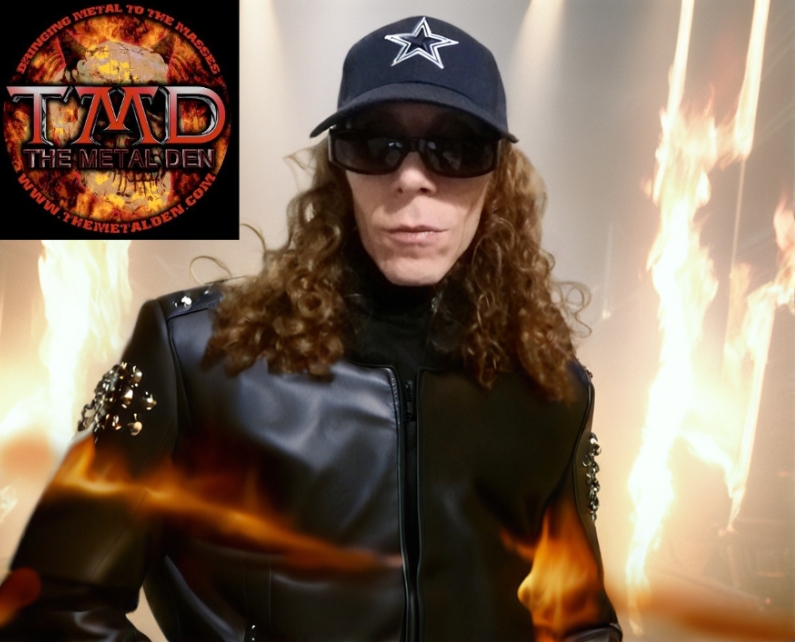
Northern European Paganism and Nordic imagery are very popular themes in heavy metal music. It is often drawn upon by many different bands across multiple sub-genres of metal ranging from traditional heavy metal to death and black metal.
It has also been able to become its own sub-genre of metal in Viking metal which has its own identity, which connects to Norse gods Odin and Thor, whom I have now learned via Ancestry site that they are both my biological cousins, believe it or not.
What if I told you that these legendary Norse gods are not fictional, but were real people? What if everything you have been taught in school about the history of mankind is incorrect?
The Search for Odin (Norwegian: Jakten på Odin) is the project title of Thor Heyerdahl’s last series of archaeological excavations, which took place in (Tanais) in Russia. Thor died in 2002 before the project could be completed.

The notion of Odin as a historical figure rather than solely a mythological deity has been explored by scholars and enthusiasts of Norse mythology for centuries. In Norse mythology, Odin is depicted as the all-father and chief of the Æsir, a god associated with wisdom, war, poetry, and magic. However, the theory that Odin might have been based on a real person comes from interpretations of ancient texts, oral traditions, and historical accounts.
Odin in Mythology
In mythology, Odin is a central figure in the Poetic Edda and Prose Edda, where he is described as the ruler of Asgard and the father of gods like Thor and Baldr. His characteristics—sacrificing his eye for wisdom, hanging from the World Tree Yggdrasil, and gathering fallen warriors in Valhalla—are rich in symbolic meaning, making him a powerful archetype rather than an obvious historical figure.
Odin as a Historical Figure
Some theories suggest that Odin may have been a real tribal leader, shaman, or influential chieftain who was later deified in Scandinavian and Germanic folklore. This idea is partially based on:
- Migration Period Myths: Some scholars have argued that the Norse gods, including Odin, were originally mortal heroes whose stories were mythologized over generations. This aligns with the euhemerism theory, which posits that gods originated as exaggerated versions of real historical figures.
- In the article about Asgard – The Ancient Powerful Kingdom Of The Norse Gods, it is briefly discussed; the relationship between two main groups of Norse gods.
In Old Norse Mythology, the Aesir are the principal gods of the pantheon.
For some time, another tribe of gods, the Vanir, shared this place with the Aesir. However, these two groups of gods fought a long and bloody war, ultimately leading to only a few of the Vanir living in Asgard.
Not much is known about this ancient war, but we are told that the Vanir were fertility deities ruling over land and sea, and the Aesir were associated with war, magic, and the sky. The differences between these two groups must invariably led to disputes and battles.

The various royal houses of English history—the Saxons, Danes, Normans, Tudors, Stuarts, Plantagenets, Hanoverians, Saxe-Coburgs, all lines blended and fused with Scottish royalty to form the modern House of Windsor—trace their bloodlines back to a common ancestor.
Indeed, the various monarchs of Europe, as attested to in the medieval Viking sagas and histories, the Anglo-Saxon Chronicle and pedigree after pedigree of every European royal lineage, are all traced back to the same person. To the Germans he was known as Votan. To the Anglo-Saxons Woden. To the Norse and other Scandinavians, he was known by the name by which he is still commonly referred to today—Odin.

Odin is, of course, the chief god of the Teutonic pantheon known as the Aesir, who lived at the supposedly mythical Valhalla (“Hall of the Chosen”) in Asgard—considered the Norse version of “heaven.”
Thor hunts for Odin
Book Says Viking Legend Was Real King – Los Angeles Times

Reuters News Agency report from Nov. 30, 2001: “The Viking god Odin may have been a real king who lived in what is now southern Russia 2,000 years ago, Norwegian explorer Thor Heyerdahl said in a controversial new book on Thursday. In The Hunt for Odin , Heyerdahl says his archaeological digs by the Sea of Azov in Russia backed evidence in 13th century sagas written by Snorre Sturlason that Odin was more than a myth.
“Heyerdahl, who won worldwide acclaim with his 1947 voyage across the Pacific on the Kon-Tiki balsa raft, said Odin was a king who lived around Azov before being driven out by the Romans and taking his followers to Sweden. Ancient metal belt holders, rings and armbands dating from 100-200 AD found in excavations around the mouth of the Don River were almost identical to Viking equivalents found in Gotland, Sweden, some 800 years later, he said. ‘Snorre didn’t sit down and dream this all up,’ Heyerdahl told a news conference to launch his latest book with co-author Per Lillestrom. ‘In ancient times, people treated Gods and Kings as one and the same thing.’ Snorre’s stories about Odin, viewed as the king of the gods in Norse mythology, portrayed him as fighting battles. By contrast, Snorre treated Thor, the god of thunder, as a mythical hammer-wielding figure riding through the air. And he said that many of the place names in Snorre’s sagas matched the ancient Greek names for places around the Sea of Azov, such as Tanais.”
Indeed, Heyerdahl has gone even farther. He has identified the region east of Azov and the Black Sea as Asgard. He sees also a connection of the Aesir or Aser with Azerbaijan, just south of the Caucasus Mountains, where the people call themselves Azeri. “Heyerdahl first began forming this hypothesis after visiting Gobustan, an ancient cave dwelling found 30 miles west of Baku [in Azerbaijan], which is famous for its rock carvings. The sketches of sickle-shaped boats carved into these rocks closely resemble rock carvings found in his own native Norway” (“Scandinavian Ancestry: Tracing Roots to Azerbaijan,” Azerbaijan International , Summer 2000, on-line at www.azer.com/aiweb/categories/magazine/82_folder/82_articles/82_heyerdah… ).
In the book Iron Age Myth and Materiality: An Archaeology of Scandinavia AD 400-1000, Lotte Hedeager, Professor of Archaeology and Head of the Department of Archaeology, Conservation, and History at the University of Oslo, Norway, explains that the royal Yngling dynasty descended from the Vanir gods.
Tacitus (born 56 AD—died c. 120 AD), a Roman senator and historian, described a Germanic tribe of the Ingaevones who, according to old traditions, descended from a son of Mannus (‘man). He was the one who gave them the name. According to Professor Hedeager, myths about Germanic peoples’ sacred descent are recorded from the time of Tacitus to the High Middle Ages.

Certain archaeological excavations at Gamla Uppsala provide evidence of the Ynglings.
While excavating the Royal Mounds at this ancient sacred site, scientists discovered human remains that, according to Swedish archaeologist Birger Nerman, were the bones belonging to Aun, Egil och Adils, three men who were Ynglings. Other mounds at the sire were also believed to contain remains of the Ynglings Royal Dynasty.
Birger Nerman (6 October 1888 – 22 August 1971) was a Swedish archaeologist, historian and philologist who specialized in the history and culture of Iron Age Sweden.
In the Ynglinga Saga, Snorri Sturluson (1179 – 1241), a famous Icelandic historian, describes the arrival of the Norse gods to Scandinavia and how Freyr founded the Swedish Yngling dynasty at Gamla Uppsala, one of the most important, sacred ancient Viking and Pagan sites in Sweden.
Humans and Neanderthals Lived Side by Side in Northern Europe 45,000 Years Ago, Study Finds
Did you know that archaeologists identified bone fragments of prehistoric modern humans in Germany, suggesting several millennia of coexistence with Neanderthals?
I’m not making this up. This year in 2024, a shocking report released new evidence that confirms the truth.

‘At the base of a medieval castle, 24 feet deep into the layered sediment of the Ilsenhöhle cave, scientists unearthed leaf-shaped spear points, animal remains and 13 bone fragments identified as early modern humans—evidence that Homo sapiens existed in northern Europe 45,000 years ago.‘
It turns out that stone artifacts that were thought to be produced by Neanderthals were, in fact, part of the early Homo sapiens toolkit,” says Jean-Jacques Hublin, a study co-author and paleoanthropologist at the Max Planck Institute for Evolutionary Anthropology, in a statement. “This fundamentally changes our previous knowledge about the period: Homo sapiens reached northwestern Europe long before Neanderthal disappearance in southwestern Europe.”
Researchers used genetic analysis of mitochondrial DNA to confirm the bone fragments found in Germany—some from new findings and others from decades-old excavations—did, in fact, belong to early modern humans. Some of the mitochondrial DNA, which is inherited through the mother, seemed to match, suggesting some bones—even those from older excavations—belonged to the same individual or people related through the mother’s line.
Inside a cave beneath a medieval German castle, researchers have discovered a pit of bones that they say unlock secrets of the earliest humans.
The remains — buried in layers of soil in the collapsed cave — included the genetic material of cave bears, hyenas and 13 bones of early humans who died 45,000 years ago.
The findings — which were described in a trio of papers published in the journals Nature and Nature Ecology & Evolution — show that early humans ventured farther north earlier than scientists had realized, that they could craft spear-shaped tools and that they then had the wherewithal to thrive in temperatures far more frigid than the climate today.
‘The shocking discoveries, which were made possible because of the development of new DNA technology, are reshaping how scientists understand the time when both humans and Neanderthals walked the European continent.’
So, if these types of groundbreaking achievements are being made right now, this certainly opens up the door to the truth being confirmed once and for all about the story of the Norse gods and humanity intertwined.
History tells us that Harald Fairhair reigned from c. 872 to 930 and is today recognized as the first King of Norway.
The Ynglings were later followed by the House of Munsö, a Swedish dynasty whose first ruler was the legendary and famous Viking Bjorn (Björn) Ironside.
The Ynglings are also mentioned in Saxo Germanicus, Beowulf, referred to as Scyling. Ynglings claimed descent from the god Freyr. They supposedly subdued most of Sweden between 500 and 700 AD.
In his saga, Sturluson writes that they may have been descended from a man called Skelfir, thus, were more appropriately called Skalfings.
AncientPages.com – Norse legends tell the legendary Ynglings were descendants of the Norse gods and the oldest known Scandinavian King dynasty. In ancient times, they ruled as mighty kings in Sweden and Norway.
Did these people truly exist? Historians remain divided on this subject. Norwegians consider the Ynglings real historical figures, but in Sweden, the Ynglings have remained mythological.
“Their existence is still a subject shrouded in mystery“, notes one researcher.
“It isn’t easy to understand the Yngling King Dynasty because these people are only mentioned in a few old sources, and very little information could shed more light on their history.”
Not easy to understand? Well, let me help you learn the real story.
Ynglinga Saga And The Arrival Of The Norse Gods In Scandinavia
In the Ynglinga Saga, Snorri Sturluson (1179 – 1241), a famous Icelandic historian, describes the arrival of the Norse gods to Scandinavia and how Freyr founded the Swedish Yngling dynasty at Gamla Uppsala, one of the most important, sacred ancient Viking and Pagan sites in Sweden.
The saga related the line of Swedish kings until Ingjald (Ingjald illråde), after which the descendants settled in Norway and became the ancestors of the Norwegian King Harald Fairhair.
I dug deeper and learned that the Ynglings were indeed a dynasty of kings, first in Sweden and later in Norway, primarily attested through the poem Ynglingatal. The dynasty also appears as Scylfings (Old English: Scylfingas, Old Norse: Skilfingar) in Beowulf. When Beowulf and Ynglingatal were composed sometime in the eighth to tenth centuries.
According to sources such as Ynglingatal and Íslendingabók, the Fairhair dynasty in Oppland, Norway was in fact a branch of the Ynglings (here Yngling is explicitly used as the name of the dynasty). Saxo Grammaticus held that the Ynglings also included Eric the Victorious, who is usually the first king in modern regnal lists, and his descendants.
The dynasty claimed descent from the gods Freyr and Njörðr, that are mentioned in Beowulf as well as Nordic sources.
According to the Orkneyinga Saga, Nór founded Norway. He was a direct descendant of Fornjótr, the King of “Gotland, Kvenland and Finnland”.
Guess what? Ancestry site (whom I did an ancestral DNA test with) has identified Fornjot as my 46th great grandfather.

Genealogy Report: Randy Rocket Cody’s Lineage to Merovingian, Plantagenet and Viking Kings – Randy “Rocket” Cody
In the book Iron Age Myth and Materiality: An Archaeology of Scandinavia AD 400-1000, Lotte Hedeager, Professor of Archaeology and Head of the Department of Archaeology, Conservation, and History at the University of Oslo, Norway, explains that the royal Yngling dynasty descended from the Vanir gods.
Family documents have proven that Fornjot “the Ancient Giant”, King of Kvenland is the grandfather of Rollo – Duke of Normandy, Count of Rouen was a Viking who became the first ruler of Normandy, Rollo, through his descendent William I of England, the seventh Duke of Normandy, is the 32nd great-grandfather of Elizabeth II of the United Kingdom.

To read more of Rocket’s acclaimed TRUTH reports, check out:
https://randyrocketcody.com






More Stories
Vince Neil Plane Crash: Another ‘PsyOp’ Designed to Mock Christians, the Satanic Connection with Sacrifice & Duality
Diddy’s Main Man Tommy Lee: “Hatched Plot to Kill Jeffrey Epstein” Over A Decade Ago, Says Industry Insider
Damning Allegations by Mick Mars Against MÖTLEY CRÜE Unveiled: “The worship of Satan corrupted my ex-bandmates!”